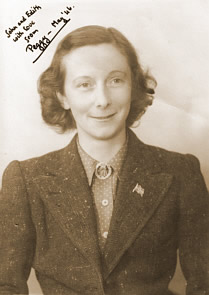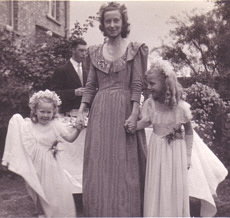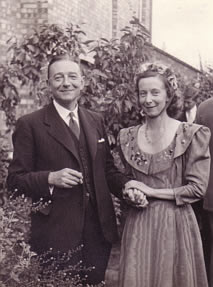


Peggy’s obituary notice
Special Forces Newsletter, October 1958
“On the 3rd May 1958 a few hours before the anniversary re-union held in Oslo to commemorate the greatest joint war effort of our two nations on either side of the North Sea – a slender unostentatious little figure who held what must have been a nearly unique place in the hearts of all that gathering host - passed from this world.
It happened perhaps in the way she would have approved. Her spirit joined the confluence of the two peoples she loved best; she had lived for that day, in a sense, for many months. She had, in apparent health, just bade a happy au revoir to her beloved husband a few hours earlier in England. She was on her way to re-kindle friendships, which had endured through the fire of war. Few in that beautiful capital of the Fjords can have felt surrounded by so much affection as she did at that moment. She did not linger; on the spur she quietly passed over to where heroes of her personal acquaintance had gone before. Peggy felt too keenly, lived too whole-heartedly, ever to need to demonstrate her feelings. She never made a fuss – least of all at her own going.
Ann Mary Margaret Hislop – known to her colleagues in S.O.E. as Peggy – joined the Norwegian section in its early days in London. The farseeing old Naval officer, Frank Spagg, dreamed up plans, Harry Sporborg sifted them in his meticulous brain and with monumental capacity for work built up the necessary organisation. Sir Charles Hambro, with his immense knowledge of the practical structure of the European countries he covered judged how and when and where to strike! In those early days when no raid seemed too bold and when the main item of equipment was burning determination.
Martin Linge, whose name lives on today in the Special Forces club of Norway, was then picking out and leading the young warriors from Norway who gradually, as they qualified for active serve, filled the pages of as strange a book as has ever been compiled. Its title was “Friends” the keeper of that book was Peggy. She kept it in an iron safe under lock and key. She recorded page after page – like Fate with her ever open record tablets – the inexorable advance of war in the lives of each “Friend.”
Peggy, I remember, employed her first day in my little office in autumn 1941 copying out and rewriting the hand scribbled pages of these “Friends” I had started in Norway and Stockholm. She came to know them all by heart. She soon came to place at their disposal the roomy flat her family occupied off Gloucester Road. Lads from far away homes in occupied Norway would discover there a kindly home from home presided over by a slight neat quiet young woman with a humorous smile who seemed to have acquired the rare art of passing almost unnoticed while carrying out the important tasks she accomplished. I have never known anyone get on with a job more completely and more unostentatiously than Peggy.
Before her “Friends” set out on military operations or during their training or briefing in London, gentle Peggy would take care of pistols, daggers, lethal tablets against the day of departure to the “field”. The when the day came, people would entrust to her their valuables – a photo, a ring, a crumpled letter – against the day of return. These trusts were solemnly guarded. Peggy flitting about the office, her long slender fingers typing, listing, tidying – ever with absolute precision, indefaticable [sic]memory, self-effacing silence and in between morsels of her lunch-hour sandwich, she would turn the pages of the book of “Friends” to add the words which brought their lives to date.
When I left for North Africa, Peggy carried on with Colonel Wilson who had become chief of the Norwegian section. But before I left she had been in hospital for a short while and, if she found some medical words wherewith to describe her ailment, some of us were never in doubt that the real cause was overwork. She was intensely fond of England and in those days of endurance, England’s cause was hers.
Norway was with England so her heart took in all Norway too – and when victory was won she was decorated by H.M. King Haakon. She worked in Oslo after the armistice in Anglo-Norwegian amity at the task of unravelling [sic]the threads of S.O. E. adventures.
Then came the happiest days in her private life. She married Edwin Forsyth, whom she had known in the Baker Street office of S.O.E. Peggy knew the joy and contentment of her own happy hearth with him. First in Ireland later at Oakhanger in England, they settled. She still kept up the many friends. On the occasions my wife and I were privileged to see them at Hellen’s Much Marcle, Peggy could always answer the innumerable questions we would ask her about the friends. She never forgot one single one of us – and there will be many now who will never forget her. The 3rd May in Oslo was to be re-union of all those that had survived and she kept her day, true as ever.”
Malcolm Munthe, Sept. 1958

